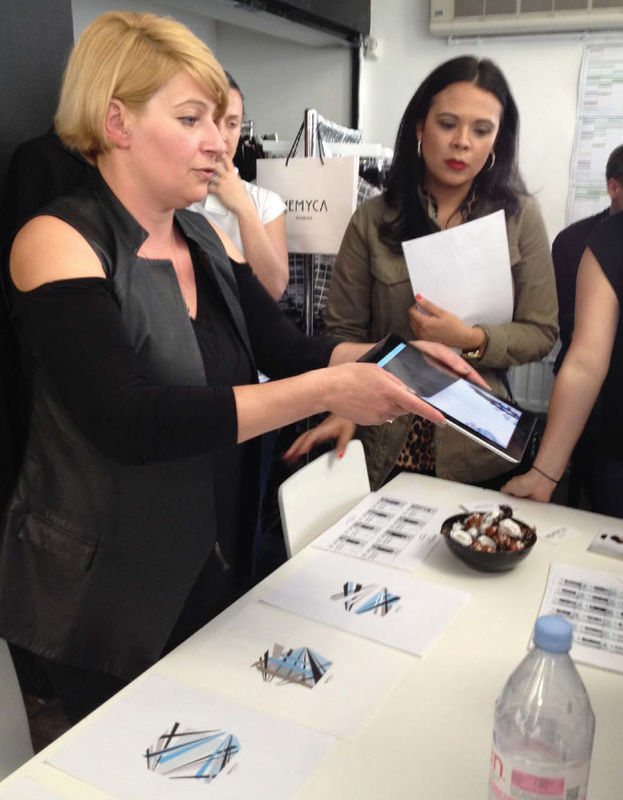Seeing the industry operate casts it in a whole new light for the student.” |
Being ThereLearning about the cultural dynamics of apparel and fashion is a highlight of studying clothing, textiles and design (CTD) at The University of Alabama. But CTD students gained this appreciation in a whole new way last summer when they joined fashion retailing instructor Babs Davis for the inaugural tour of the “Fashion Capitals of the World.” The students rubbed shoulders with people of different cultures as they walked the streets of the storied fashion districts they’d studied. They toured showrooms and museum exhibitions, saw fashion themes mirrored from culture to culture, and met with industry leaders in New York and several European centers.
“Learning about different cultures is important, but students need to be immersed in those cultures to truly understand the significance of the differences,” Davis says. In New York, students toured the Metropolitan Museum of Art exhibition “China Through the Looking Glass” and learned to identify fashion elements in the artworks throughout the museum. At the Bard Graduate Center’s “History of the Silhouette,” they saw dresses such as the 18th century French pannier with its immense hoop skirts, which inspired the design of the wide settees and French doors required to accommodate them. At the showroom of HEMYCA in London, they watched the company’s cutting-edge technology at work putting a line sheet (a reference sheet for buyers that shows a picture of each garment with cost, available colors/ sizes, delivery dates, etc.) in motion with the use of an app. “Seeing the industry operate casts it in a whole new light for the students,” says Davis. Then it was on to history lessons at the Kensington Palace Dress Exhibit and the Alexander McQueen exhibit at the Victoria & Albert Museum, a favorite of many of the students. After a lecture by Amber Butchart, author of “Nautical Chic,” students began to identify nautical influences in the fashions of all the cities they toured. “It’s rewarding to see students connect the things they’ve learned in the classroom with what they see in these cities and begin to put it all together,” Davis says. Paris provided an opportunity to meet with several industry leaders, including the CEO of fashion forecasting company Peclers Paris, who taught students how forecasting fits into the fashion process. They toured the Yves Saint Laurent Foundation and the YSL offices and studio, as well as a showing of the designer’s 1971 “Scandal” collection at the YSL Museum. The timing of the fashion tour coincided with the World Expo in Milan, where participating countries showcased everything from tradition to technology in elaborate pavilions designed for the event. Students had an audience with the president of Hogan Footwear, part of the Tod’s group in New York City, and later with representatives of Italia, where they learned how the company collaborates to create collections, such as the Pharrell Williams footwear line for Adidas. When students can visit other cultures, their study becomes “far less theoretical and more alive,” Davis says. “The time they spent with leaders in the industry can’t be replicated. This tour complements the classroom beautifully and opens the world to our students.” |
| Reunion Magazine | REUNION MAGAZINE |



